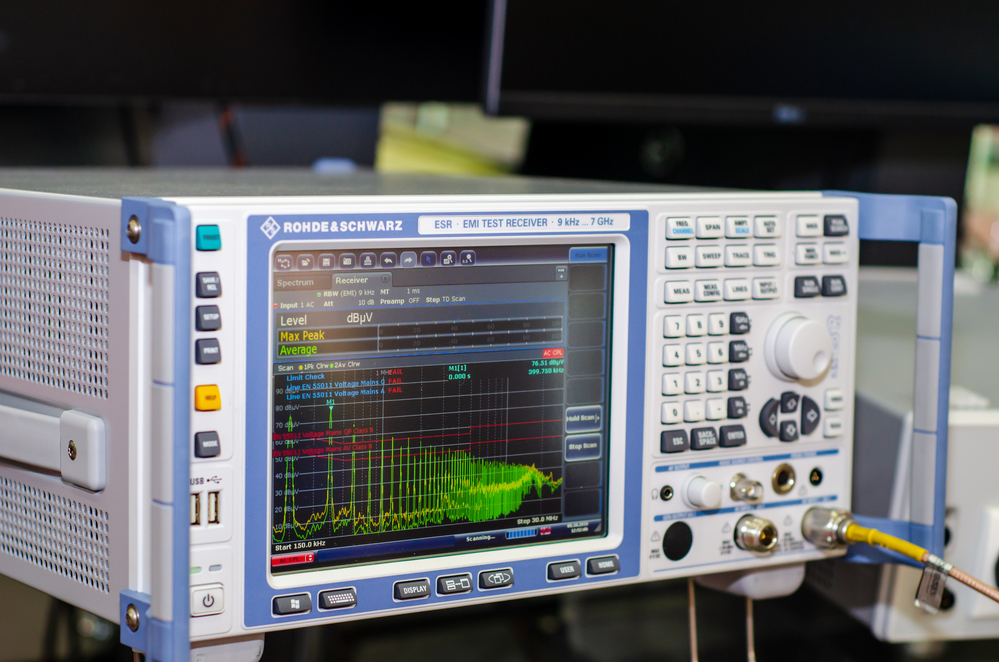
What is EMC and what does it have to do with control cabinets?
Control cabinets are used in various environments. Their task is to protect equipment, control systems and switchgears located inside from harmful external conditions. These may include not only chemical and atmospheric factors but also the effects of electromagnetic fields. It is worth learning how to make sure that all elements of the system work properly.
What should be done to ensure that the operation of electromagnetic waves does not affect the equipment?
It is not possible to eliminate electromagnetic fields, devices that produce them or equipment sensitive to electromagnetic waves. The proper functioning of the system is only possible if the equipment resources are properly protected. Thanks to proper parameters, control cabinets can minimize the impact of electromagnetic waves occurring in a given environment. There are two ways to use cabinets to ensure the safe operation of all devices working in the electromagnetic field. Here they are:
- The first way is to place devices and systems that produce electromagnetic waves in a control cabinet to achieve electromagnetic compatibility.
- The second way is to place devices sensitive to electromagnetic waves in control cabinets.
Remember that not every control cabinet will be suitable. Only cabinets that have special modifications (e.g. steel gaskets and EMC mesh on the windows) can be used.
To better understand the role of control cabinets in ensuring the proper operation of equipment, you need to know what electromagnetic compatibility is.
What is the electromagnetic compatibility, EMC?
EMC is the ability of equipment and systems to work properly in an electromagnetic environment. In addition, it also involves the absence of electromagnetic field disturbance emissions which could adversely affect the operation of other equipment and systems in a given environment. In a few words, we can summarize that EMC is a feature of a device that allows it to work properly in an environment where electromagnetic field occurs, without interfering with it. The origins of electromagnetic compatibility can be dated to the second half of the 19th century. It was then that the first work began on how to avoid interference in telegraphic lines, which was caused by electric lines and street lighting. Currently, electromagnetic compatibility rules are regulated by EU directives. The first version of the EMC Directive was issued in 1996 but since then it has been amended and updated several times. This demonstrates dynamic changes taking place in EMC-related issues.
What is an electromagnetic environment?
The electromagnetic environment is an area where one of the basic physical interactions, i.e. electromagnetic interaction, occurs. It is characterized by the determination of all electromagnetic phenomena occurring in it. Due to the variability of electromagnetic field, it is often described with the use of statistical methods, averaged measurements, etc. The electromagnetic environment can be divided into two types. They are distinguished by the origin of electromagnetic waves. Therefore, they can be divided into:
- The natural electromagnetic environment is created by natural sources such as the globe, lightning, as well as extra-terrestrial sources such as the Sun.
- Artificial electromagnetic environments are those created by human activity. These include those created as a result of the impact of the electricity network, wireless network, radio and television transmissions. These devices may emit electromagnetic waves intentionally (radio) and unintentionally.
Electromagnetic compatibility and operation of equipment
As can be seen from the above information, EMC is necessary in an electromagnetic environment. If you fail to ensure that the equipment and control cabinets have electromagnetic compatibility, this can lead to the following consequences:
- indication of incorrect measurements by equipment,
- incorrect readings of apparatus operating in an electromagnetic environment,
- frequently repeated equipment failures,
- malfunctioning of equipment and entire systems,
- non-compliance with standards which may result in the withdrawal of products from the market,
- financial and administrative penalties for failure to implement EU legislation,
- high costs of repairs and upgrades of equipment.
How can a control cabinet help to achieve EMC?
Control cabinets can play a key role in the proper functioning of equipment in an electromagnetic environment. The most important issue is to determine that the cabinet is to be characterised by electromagnetic compatibility already at the design stage. Then all measures will be taken to eliminate the susceptibility to the impact of electromagnetic waves, as well as to the emission of interference causing other devices to operate incorrectly. The production of cabinets must then take place in a way that takes account of the use of cabinets in an electromagnetic environment. The subsequent installation, in accordance with the art of engineering, is also important. A well designed, manufactured and operated control cabinet will guarantee electromagnetic compatibility, provide resistance to electromagnetic fields and not interfere with other devices.


 en
en  PL
PL  DE
DE  RU
RU  LT
LT  SV
SV  FR
FR  ES
ES  HU
HU  NO
NO  DK
DK  FI
FI 